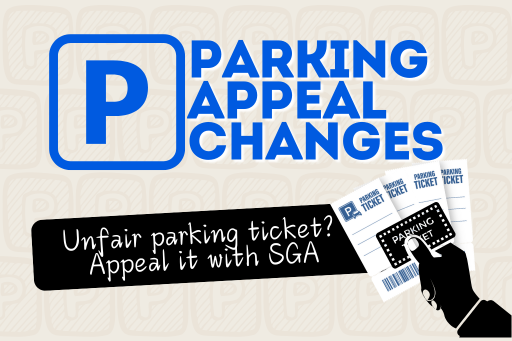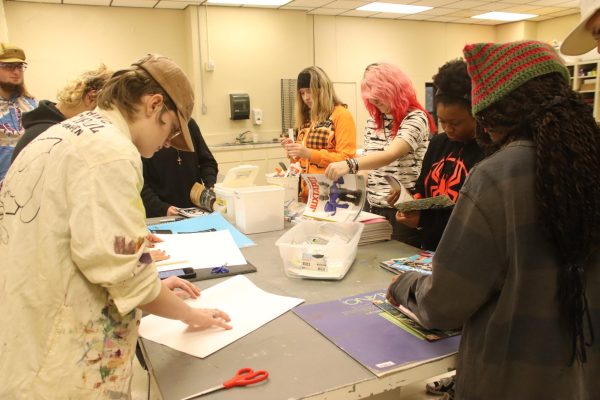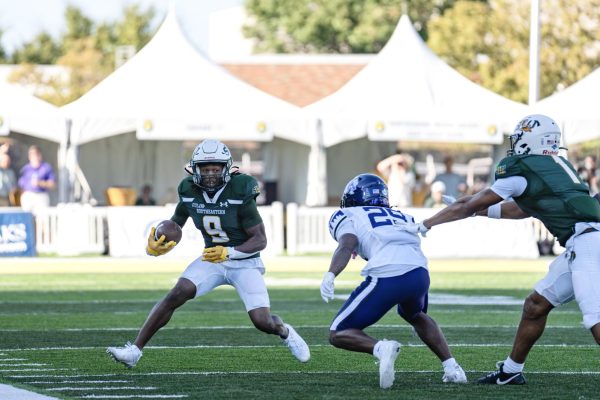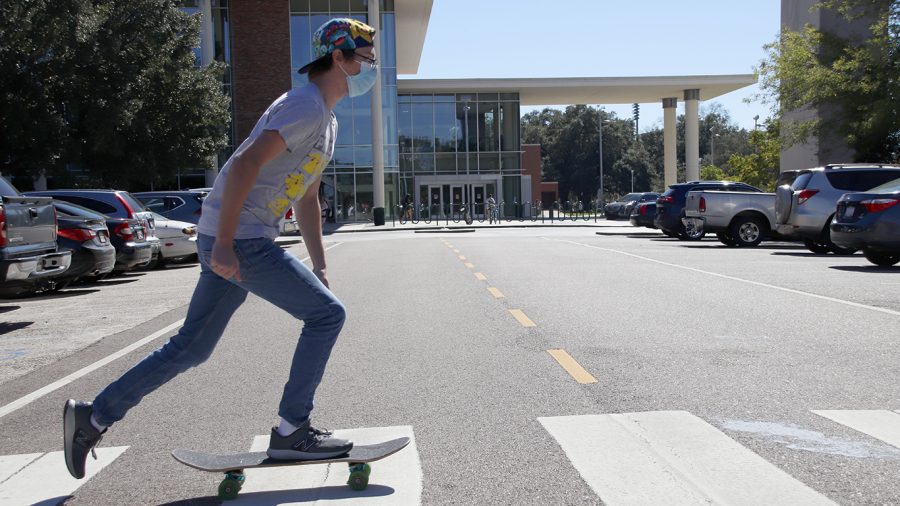Scooters, bikes and skates, oh my: How students get around campus
Brynn Lundy/The Lion’s Roar
Trevor Tolar skates across the crosswalk in front of Sims Memorial Library. A number of students use various modes of transportation to get around campus.
Every day on campus, hundreds of students can be seen walking to class, the Mane Dish, library or to their cars or dorms. Among the many walkers, there are those who choose different methods of moving around campus.
From bikes and skateboards to scooters and rollerblades, students utilize various ways to travel on campus from day-to-day.
Trevor Tolar, a junior chemistry major, is a commuter student who uses his skateboard as transportation between classes and around the university grounds.
“My freshman year, I had a whole bunch of friends that got me into skateboarding,” shared Tolar. “So, we’d just skateboard around campus. Then I just got really lazy, so now all I do is skateboard around campus.”
Karell Hunter, a junior biological sciences major, is an on-campus resident in Taylor Hall. He explained why he utilizes his bike as on-campus transportation.
“It’s more convenient, and especially if I’m in a big rush, then I won’t have to worry about showing up late to class,” said Hunter. “I have my bike, and I get there, like, high speed.”
One challenge posed to those who use transportation other than walking is weaving around pedestrians on the roads and sidewalks around campus.
“The best thing to do, in my opinion, if there’s a big group of people, and you know they’re not going to move out of the way, I just get off the skateboard and walk past them,” explained Tolar. “Otherwise, a lot of people are kind of nice. They’ll get confused, though, because they don’t know which way you’re going to go. So, if you just stay straight, usually they’ll get out of the way.”
According to Hunter, sometimes other people move and allow him enough space to pass, and other times, he redirects his bike on a different path.
“Sometimes, they move out the way,” explained Hunter. “They’ll hear me coming because my bike is really squeaky, or sometimes I’ll just duck off on the road or into the grass where there’s less people. I also have to watch out for cars and watch out for potholes and all that.”
Tolar does not feel the need for the university to implement lanes for modes of transportation such as bikes and skateboards unless accidents occur. However, Hunter believes bike lanes would increase efficiency and safety.
“Yes, I’ve been saying that for the longest time,” expressed Hunter. “They definitely need to, because riding my bike down the same path that everybody is walking is trouble for me, and it’s trouble for them. I know they get really irritated, and I do too. If they had bike lanes, that would seriously help.”
Hunter commented on how bike-riding impacts his everyday campus experience.
“It definitely makes it more enjoyable,” noted Hunter. “Like I said earlier, I can get to my classes faster, and then, in my free time, I’ll take a ride around the city, and it helps me see the sights and enjoy Hammond even more.”
Your donation will support The Lion's Roar student journalists at Southeastern Louisiana University.
In addition, your contribution will allow us to cover our annual website hosting costs.
No gift is too small.

Brynn Lundy Arriago began working for The Lion's Roar in the fall of 2019, her first semester at Southeastern, and now serves as Graduate Assistant. From...





